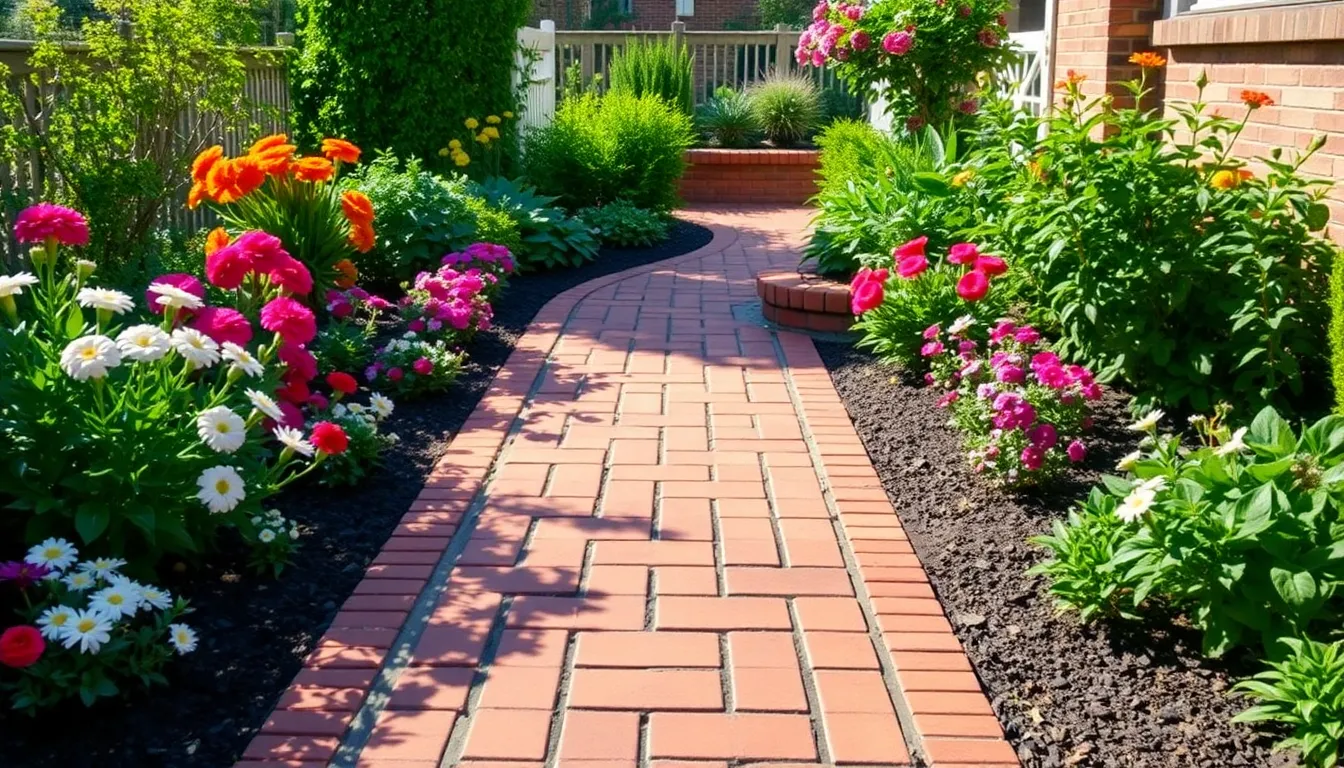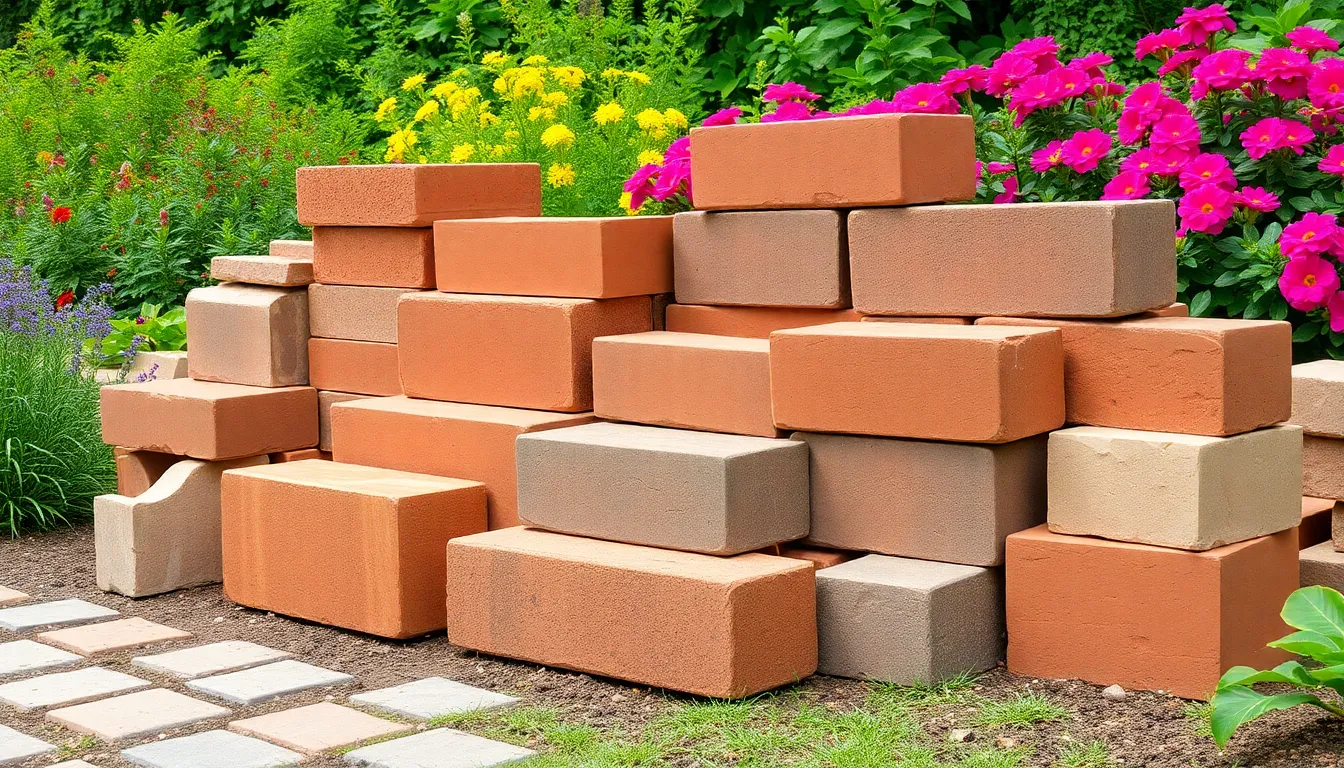The Best Fluffy Pancakes recipe you will fall in love with. Full of tips and tricks to help you make the best pancakes.

Bricks for Landscaping: Transform Your Yard into an Outdoor Oasis Today
When it comes to landscaping, bricks are like the Swiss Army knife of outdoor design. They’re versatile, durable, and can transform any yard from drab to fab faster than you can say “garden gnome.” Whether it’s creating charming walkways or sturdy retaining walls, bricks bring a touch of elegance that even your neighbor’s prize-winning roses can’t compete with.
Bricks For Landscaping
Bricks offer numerous advantages in landscaping projects. Their durability and aesthetic appeal make them a preferred choice for many outdoor designs.
Durability And Longevity
Durability stands out among bricks’ advantages. They resist weather changes, harsh temperatures, and heavy foot traffic. Many bricks last for decades, maintaining their structure and integrity. Environmental factors like moisture and sunlight do not significantly impact them. This resilience reduces the need for frequent replacements, which saves costs over time. Homeowners appreciate how bricks withstand wear and tear, making them ideal for various landscaping applications.
Aesthetic Appeal
Aesthetic appeal remains a key benefit of using bricks. Various colors and textures enhance any outdoor space, complementing natural landscapes. Unique patterns can create visual interest in walkways or patios. In addition, bricks combine well with other materials like stone or wood, allowing for diverse design options. The classic look of bricks adds elegance and charm to yards, often surpassing the beauty of floral arrangements. Landscapes featuring bricks convey a sense of permanence and sophistication, enhancing property value.
Types Of Bricks For Landscaping

Understanding the different types of bricks enhances landscaping decisions. Each brick type offers unique characteristics and benefits.
Clay Bricks
Clay bricks exhibit exceptional durability and timeless aesthetics. These bricks originate from natural clay, undergoing high-temperature firing that solidifies their structure. Colors range from warm reds to earthy browns, allowing for versatile design choices. Additionally, clay bricks retain heat well, making them suitable for paths or patios in cool climates. Maintenance requires minimal effort due to their resistance to weathering and fading. For garden borders, pathways, or walls, clay bricks provide both functionality and visual appeal.
Concrete Bricks
Concrete bricks deliver strength and versatility. Composed of cement, aggregates, and water, they offer a durable alternative to other materials. Available in various colors and textures, concrete bricks easily complement different landscaping styles. Their uniform shape makes installation straightforward, ensuring even spacing for walkways and borders. In addition, concrete bricks resist moisture and decay, making them suitable for different weather conditions. These bricks excel in creating robust retaining walls or decorative features that enhance both utility and beauty.
Design Ideas For Bricks In Landscaping
Bricks offer numerous design possibilities for enhancing outdoor spaces. Utilizing bricks creatively allows for unique and functional landscapes.
Walkways And Patios
Creating elegant walkways and inviting patios with bricks transforms outdoor areas into charming retreats. Curved pathways can guide visitors through gardens, while rectangular bricks create a uniform feel. Both clay and concrete bricks fit seamlessly into designs, allowing various layouts. Warm hues or cool tones cater to personal style, enhancing the visual appeal of each space. These durable surfaces withstand heavy foot traffic while maintaining their aesthetic charm.
Garden Borders
Bricks make excellent garden borders, providing structure and definition to flower beds and vegetable patches. Defined edges keep soil intact and prevent grass encroachment. Choosing bricks in contrasting colors accentuates plant life, drawing attention to gardens. Vertical installations, such as low brick walls, add dimension while supporting soil erosion control. Integrating bricks enhances not only the beauty but also the function of garden spaces.
Installation Tips For Bricks
Proper installation ensures the longevity and effectiveness of brick landscaping. Follow essential steps to achieve a durable and visually appealing result.
Preparing The Site
Clearing the area is crucial. Remove grass, plants, and debris from the space to create a clean foundation. Assessment of the soil follows; compacted or loose soil may need amendment. Level the ground to prevent water accumulation, which can compromise the integrity of the bricks. In some instances, adding a layer of gravel enhances drainage and stability. Placing stakes and string helps outline edges, ensuring accurate dimensions for the project.
Laying The Bricks
Starting from a corner makes the process straightforward. Begin by placing the first brick in the selected pattern, checking for alignment and levelness. Adjust each subsequent brick; maintain consistent spacing using spacers if necessary. Gently tapping bricks into place ensures a snug fit. For curved designs, smaller cuts may be required. After laying all bricks, sweep sand into the joints to lock them in place, creating a stable, finished surface. Regular maintenance, including checking for shifting, keeps the brickwork intact over time.
Conclusion
Bricks stand out as a top choice for landscaping due to their unique blend of durability and aesthetic appeal. Their ability to withstand the elements while enhancing outdoor spaces makes them an invaluable asset for any homeowner. With various types available each offering distinct advantages there’s a brick solution for every landscaping need.
Whether creating elegant walkways or sturdy retaining walls bricks can transform an ordinary yard into a charming retreat. By incorporating bricks into design plans homeowners can achieve a beautiful and functional outdoor environment that lasts for years. Investing in brick landscaping not only elevates the visual appeal but also adds long-term value to the property.
